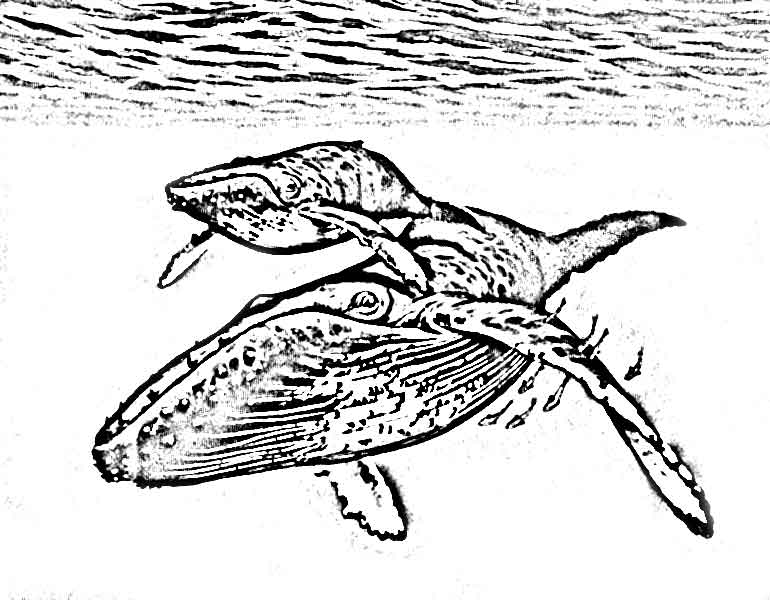Now and then we are happily surprised by whales showing themselves during sailing. It’s a real Caribbean sailing delight!
Text by Mallika. Images by Deep.
Every time it is amazing to see how big they are. Despite their immense weight they fling themselves partly above sea level as if they are an elegant dolphin.
In the Windward Caribbean Islands you can spot the sperm whale, humpback whale and the smaller pilot whale. The biggest change to see them is during the months January till April. They escape the cold winter from the north, where their feeding grounds are, to meet each other in the warm Caribbean waters to mate. Not only humans think this part of the world is just perfect for their honeymoon!
How does a newborn whale breath?
After their romantic rendezvous in Caribbean paradise the female hopefully gets pregnant. Large whales, like the humpback whale, are pregnant for almost 12 months. The mother carries her offspring in her womb like other mammals. At birth, the calf may be 10-14 feet (3-4 meter) long and weigh almost a ton. That’s about the weight of a small pick up truck!
Mother humpback whales take care of their babies because the babies wouldn’t survive without the help and protection of their mothers. When the whale is born the first thing the mother has to do is bring the baby whale to the surface so that it can take its first breath of fresh air. She will assist her baby in this till it is strong enough to swim by itself. The mother and baby whale keep on swimming continuously. They can’t stop because baby whale will sink immediately. It has not enough fat or ‘blubber’ yet to float. To help her baby the mother pulls her child with her along the slipstream created by her swimming. In this way swimming is not that hard and the baby won’t get tired.
How long can a whale stay underwater?
Being a mammal, like us, whales are dependent on oxygen out of the air to stay alive. They need to go to the surface for their breathing. Although their lungs work in the same way, their breathing system is far more efficient in comparison to the breathing systems of mammals, living on land. This allows them to stay underwater for long periods of time. Adults can go without breathing for as long as 2 hours!
Their highly specialized breathing system makes use of different techniques to increase efficiency. Whales are for example able to absorb 90 % of the oxygen out of each breath. Humans can only absorb 15% of the oxygen. Another technique: Excess of oxygen is stored in myoglobin. This is a protein found in muscles. Whales have a greater amount of myoglobin than other animals, allowing them to store large amounts of oxygen at a time. Their last technique helps them to use their oxygen more efficient than us; As soon as they dive underwater, their heart beats more slowly and select arteries are constricted. This results in blood going slower through all the organs with the same blood pressure, which gives the organ cells more time to extract oxygen from the blood. Hence more oxygen can be consumed by the organs from the same ‘breath’.
How do whales breath while sleeping?
It is incredibly smart how a mammal has been able to adapt to ocean live in this ingenious way! But how ingenious it all sounds, everybody needs to sleep now and then. And that becomes a very short sleep if you have to reach for the surface every 1-2 hours. In comparison to us, whales are voluntary breathers. This means that they are fully aware of each breath they take. During sleep they would forget to rise up when they need a fresh breath of air and suffocate.
Another brilliant technique makes that they are able to find their rest: These wonders of the sea, together with the dolphins, never sleep completely but always half; one brain-half can go into sleep, while the other brain-half stays awake and alert. This has been determined by doing EEG studies on dolphins. When whales and dolphins shut down half of their brain they also shut their opposite eye. With the other eye they can spot predators, obstacles and other animals. After two hours they alternate brain-half and eye. This kind of sleeping is also called cat-napping.
In the next article you can read about how those wonderful creatures find their food in the vast ocean.
Sources:
- article from magazine Compass April 2014 no. 223, written by Nathalie Ward.
Websites:
- http://www.whalefacts.org
- http://scienceline.ucsb.edu/getkey.php?key=1009
- http://www.scientificamerican.com/article/how-do-whales-and-dolphin


